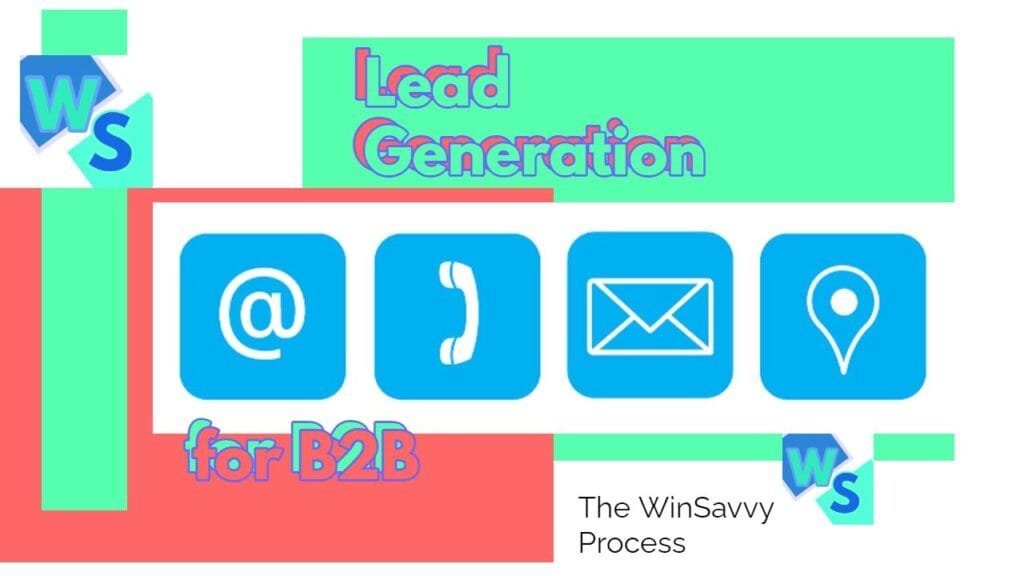Benefits of Co-Marketing Campaigns
Co-marketing campaigns offer numerous advantages that can significantly enhance your business’s marketing efforts. Understanding these benefits can guide you in leveraging collaborative strategies effectively.
Enhancing Brand Awareness
Co-marketing allows you to share the risks and costs associated with marketing initiatives while accessing a larger audience. This strategy not only boosts brand awareness but also improves credibility and authority in the market. By collaborating with another brand, you can tap into their existing customer base, significantly expanding your reach to new and diverse audiences, leading to accelerated business growth. Studies indicate that collaborative marketing strategies enable businesses to reach a more extensive audience than they could independently, thus enhancing visibility and potential engagement (Ignition, Partnerize).
| Benefit | Impact |
|---|---|
| Shared Audience | Access to new customers |
| Enhanced Credibility | Increased trust through collaboration |
| Broader Reach | Improved visibility and engagement |
Cost Sharing and Efficiency
One of the most notable advantages of co-marketing campaigns is the cost savings they provide. Both partnering businesses can jointly cover the expenses related to campaign creation and execution, making such initiatives more affordable. By sharing advertising costs, you can stretch your marketing budget further and allocate resources more efficiently. Studies show that companies benefitting from co-marketing typically spend less on advertising than they would have done individually, while also achieving heightened brand awareness for both parties involved (Partnerize, BigCommerce).
| Expense Category | Individual Cost | Shared Cost | Savings |
|---|---|---|---|
| Campaign Development | $10,000 | $6,000 | $4,000 |
| Advertising | $5,000 | $3,000 | $2,000 |
| Total | $15,000 | $9,000 | $6,000 |
Utilizing co-marketing strategies can help your business enhance brand awareness and achieve cost-efficiency, leading to more successful marketing campaigns. To explore examples of effective marketing strategies, consider checking our guide on marketing campaigns examples.
Successful Co-Marketing Examples
Co-marketing campaigns can significantly enhance the visibility and reach of your brand. Reviewing successful collaborations can provide insights into the benefits of such marketing strategies.
GoPro & Red Bull Partnership
The partnership between GoPro and Red Bull exemplifies a highly effective co-marketing campaign. GoPro, known for its action cameras, collaborated with Red Bull, a brand synonymous with extreme sports. Throughout this partnership, GoPro captured breathtaking footage of Red Bull’s extreme sports athletes during various events. This collaboration generated compelling content that showcased the capabilities of GoPro cameras while simultaneously promoting Red Bull’s adventurous brand image.
This union allowed both brands to extend their reach and engage with their respective audiences more effectively. The visual content gathered not only augmented brand awareness but also reinforced customer loyalty, especially among adrenaline-seeking consumers. For more insights on effective collaborations, consider exploring our marketing campaigns examples.
Nike & Apple Collaboration
Another notable co-marketing example is the collaboration between Nike and Apple, which birthed the Nike+ iPod app. This innovative application allowed users to track their running performance while simultaneously enjoying their favorite music from the iPod. By creating this synergy, Nike tapped into Apple’s loyal customer base while enhancing its own fitness brand identity.
The integration of technology and fitness not only established a deeper connection between the two companies but also created a unique value proposition for consumers. This collaboration underscored the benefits of combining expertise from different sectors to deliver innovative solutions. To explore more about creative partnerships, you may like our piece on integrated marketing campaign examples.
These successful co-marketing campaigns illustrate how strategic alliances can leverage shared strengths to achieve greater market impact and consumer engagement.
Steps to Identify Co-Marketing Partners
Identifying the right partners for co-marketing campaigns is essential for maximizing the benefits you can achieve. Consider focusing on aligning brand values and setting clear goals.
Aligning Brand Values
The first step in identifying potential co-marketing partners is to ensure that your brand values align with those of your prospective partners. A successful partnership depends on shared beliefs, target audiences, and similar strategic directions. Mutual trust is also crucial in establishing a collaborative relationship. Co-marketing partners should be on the same page about their mission and objectives to create a coherent message in marketing activities.
Furthermore, it is essential to assess each brand’s marketing strengths, as this includes their reach, audience engagement, and reputation in the market. This alignment is critical for the effectiveness of the co-marketing strategy. For more insights on the importance of brand alignment, check out our article on marketing campaigns examples.
| Key Elements | Description |
|---|---|
| Shared Values | Similar beliefs and missions |
| Target Audience | Overlapping customer demographics |
| Strategic Direction | Common goals and marketing approaches |
| Mutual Trust | Confidence in partnership responsibilities |
Setting Clear Goals
Once you have identified potential partners, the next step is to establish clear and measurable goals for the co-marketing initiative. Define what each party aims to achieve from the collaboration. Setting specific objectives allows both businesses to track progress and assess the success of the initiative. Consider factors like increased brand awareness, lead generation, or sales conversions.
It is advisable to formalize these goals with a clear legal agreement. This should cover not only the responsibilities and expectations of both parties but also intellectual property rights and financial considerations. Focusing on measurable outcomes will enable you to evaluate the effectiveness of the campaign and adjust your strategy as needed. For examples of successful marketing partnerships, refer to our article on successful marketing campaigns case studies.
| Goal Type | Description |
|---|---|
| Brand Awareness | Increase recognition among shared audiences |
| Lead Generation | Enhance opportunities for new customers |
| Sales Conversions | Boost revenue through collaborative efforts |
| Engagement Metrics | Measure audience interaction with campaign |
Establishing shared values and clear objectives enhances the potential for success in co-marketing campaigns and enables you to harness the full spectrum of co-marketing campaigns benefits.
Co-Branding vs. Co-Marketing
Understanding the distinction between co-branding and co-marketing is essential for maximizing the potential of your marketing strategies. Both approaches facilitate collaborative efforts among brands, but each serves distinct purposes and outcomes.
Leveraging Brand Strengths
Co-branding involves a strategic partnership between two or more brands to jointly develop a product, service, or customer experience. This process allows each brand to leverage its strengths, resources, and expertise. By pooling funding and utilizing brand images, companies can enhance their visibility and reach a broader market. According to Medium, the main goal is to benefit from each other’s reputation and customer base, leading to increased exposure and boosted customer loyalty for all participating brands.
In contrast, co-marketing focuses on collaborative promotional strategies rather than product development. This approach allows brands to align their marketing efforts, sharing costs and resources while aiming for mutual benefits. Both methods can yield significant advantages, but understanding how to effectively leverage brand strengths is key to your success.
| Aspect | Co-Branding | Co-Marketing |
|---|---|---|
| Purpose | Jointly develop products or services | Collaborative promotional activities |
| Focus | Brand reputation and customer base | Shared marketing efforts |
| Benefits | Increased visibility, market reach, customer loyalty | Cost-sharing, enhanced campaign effectiveness |
Joint Product Development
Joint product development is a hallmark of co-branding. This method creates opportunities for brands to combine their unique attributes, resulting in innovative products that capitalize on the strengths of each partner. This collaborative process can enhance customer experiences while fostering loyalty through the creation of products that resonate with both brands’ audiences. A successful co-branding partnership is supported by shared values, beliefs, and target audiences, along with a clear legal agreement regarding responsibilities and intellectual property (Medium).
In contrast, co-marketing does not necessarily involve joint product creation; instead, it typically revolves around shared marketing initiatives designed to reach overlapping customer segments. Strategies may include joint advertising, social media promotions, or co-hosted events, thus harnessing the respective brand audiences to aim for greater impact.
For a deeper understanding of effective collaborative marketing strategies, consider exploring marketing campaigns examples or integrated marketing campaign examples. Each method, whether co-branding or co-marketing, can provide unique benefits tailored to your business’s niche and objectives.
Co-Marketing for Online Retailers
Extending Market Reach
Co-marketing can help online retailers extend their current market reach by providing access to consumers that each company may not have reached yet, or by giving additional legitimacy to the company with existing consumers. This strategy opens doors to new demographics and markets that might have been previously inaccessible. When you collaborate with another brand, you leverage each other’s customer bases and reputations, enhancing your visibility and credibility in the marketplace.
For example, if two brands in different but complementary sectors partner, they can introduce their products to each other’s audiences. This is particularly beneficial for online retailers looking to grow their market share without the extensive effort and time it typically requires. By tapping into partnerships, you can quickly build brand recognition and trustworthiness.
| Benefit | Description |
|---|---|
| Expanded Reach | Access to new consumer demographics. |
| Increased Credibility | Enhanced legitimacy through partnership. |
| Competitive Advantage | Differentiation in saturated markets. |
For further examples of successful collaborations, refer to our section on marketing campaigns examples.
Sharing Advertising Costs
Co-marketing allows online retailers to stretch their advertising budget as the cost is shared between the partnering parties. By combining efforts, each company spends less on advertising compared to doing it individually. This collaborative approach not only reduces financial strain but also maximizes the impact of your marketing efforts.
Pooling resources means that you can invest in more significant campaigns, explore new advertising channels, and develop creative strategies that would otherwise be out of budget. As a result, both parties can reach a larger audience while maintaining a sustainable marketing budget.
| Cost Sharing | Description |
|---|---|
| Combined Budgets | Lower individual expenditure on marketing. |
| Shared Resources | Increased capability for larger campaigns. |
| Enhanced Impact | Greater reach and frequency of marketing messages. |
For insights into efficient resource utilization, consult our guide on digital marketing campaign strategies.
Short-Term Marketing Strategies
In the ever-evolving landscape of marketing, implementing effective short-term strategies is crucial for achieving quick results. Two prominent methods to consider are Search Engine PPC (Pay-Per-Click) ads and social media ads. Both provide unique advantages that can be harnessed effectively for your co-marketing campaigns.
Search Engine PPC Ads
Search Engine PPC ads deliver instantaneous results and can significantly enhance audience exposure. This strategy allows you to position your ads at the top of search engine results pages, capturing the attention of users actively searching for relevant products or services. The average cost per click (CPC) for PPC ads hovers around $2.50. With a campaign budget of $5,000, you can generate approximately 2,000 clicks, bringing substantial traffic to your website (Big Sea).
| Campaign Budget | Average CPC | Estimated Clicks |
|---|---|---|
| $5,000 | $2.50 | 2,000 |
PPC advertising allows you to track performance metrics in real time, enabling swift adjustments to optimize campaign effectiveness. For a comprehensive understanding of how your marketing efforts are resonating, refer to our article on measuring marketing campaign success.
Social Media Ads
Social media advertising represents another powerful short-term marketing strategy that is both cost-effective and widely accessible. With an average CPC of about $0.23 on Facebook in the U.S., this method allows businesses to stretch their budgets effectively. You can initiate campaigns with as little as $5 per day, ensuring your ads reach a vast audience across various demographics (Big Sea).
| Daily Budget | Average CPC | Estimated Clicks per Month |
|---|---|---|
| $5 | $0.23 | ~650 |
Social media ads allow for detailed targeting and engagement, making it easier to connect with your desired audience. You can take advantage of this platform to gather customer insights and refine your overall marketing strategy. For more insights into effective digital marketing tactics, explore our article on digital marketing campaign strategies.
Both PPC and social media ads serve as essential tactics within your broader co-marketing campaigns, providing immediate visibility and engagement opportunities while complementing long-term strategies.
Long-Term Marketing Strategies
In your pursuit of effective marketing strategies, long-term approaches such as search engine optimization (SEO) and organic social media play vital roles in cultivating sustainable growth for your business. These methods often require patience and persistence, but the potential for significant returns makes them well worth the effort.
Search Engine Optimization (SEO)
Search engine optimization is an essential long-term strategy aimed at enhancing your website’s visibility in search engine results. Although it may take at least six months to observe tangible results, the investment pays off with an expectation of generating $3 or more in business revenue for every dollar spent (Big Sea).
SEO involves optimizing various aspects of your website, including content, keywords, and technical elements, to improve rankings. By increasing your online presence and credibility, you can attract more organic traffic, which leads to higher conversion rates and customer loyalty. For a deeper understanding of successful campaigns, you may refer to our article on marketing campaigns examples.
| SEO Investment | Expected Return |
|---|---|
| $1 | $3 or more |
| Timeframe for Results | At least 6 months |
Organic Social Media
Organic social media is another critical long-term strategy that involves engaging with your audience through non-paid posts, shares, and comments on platforms like Facebook, Instagram, and Twitter. This approach fosters authentic relationships with customers, builds brand loyalty, and enhances your brand’s reputation over time.
While organic growth may be slower compared to paid advertising, it offers several benefits, such as low cost and increased credibility among consumers. Establishing a consistent posting schedule and creating high-quality content tailored to your audience can cultivate a vibrant online community.
To measure the overall effectiveness of your social media efforts, consider integrating them with other long-term strategies such as content marketing. This synergy can lead to improved website traffic, user engagement, and ultimately better conversion rates. Review our insights on measuring marketing campaign success for effective tracking methods.
| Organic Social Media Strategies | Benefits |
|---|---|
| Engaging Content | Builds community |
| Consistent Posting | Enhances brand presence |
| Authentic Interactions | Fosters customer loyalty |
Integrating long-term strategies such as SEO and organic social media will help you unlock the full potential of your marketing campaigns, yielding lasting results for your business. Consider exploring further strategies such as account-based marketing campaigns or integrated marketing campaign examples for a holistic approach to your marketing efforts.
Marketing Budget Allocation
Marketing budget allocation is a critical aspect of any successful marketing strategy. It dictates how effectively resources are utilized across various marketing channels and campaigns.
Digital Marketing Allocation
A substantial portion of the marketing budget, approximately 40-50%, is dedicated to digital marketing initiatives. This encompasses numerous activities, including website development, content marketing, search engine optimization (SEO), paid advertising campaigns, and social media engagement. Traditional marketing still holds a significant presence, generally accounting for about 20-30% of the total budget. This includes spending on channels such as television, radio, print advertisements, and direct mail campaigns. Additionally, events and sponsorships may take up 10-20% of the budget, focusing on direct interactions with potential customers and increasing brand visibility.
| Marketing Channel | Budget Allocation (%) |
|---|---|
| Digital Marketing | 40-50 |
| Traditional Marketing | 20-30 |
| Events & Sponsorships | 10-20 |
For further insights into various marketing campaigns, you may find it useful to explore our marketing campaigns examples.
ROI-Based Budgeting
ROI-based budgeting is a strategic approach to determining the allocation of marketing funds. This method focuses on aligning marketing expenditures with the expected return on investment. Different strategies for budgeting include revenue percentage allocation, competitive parity, objective-based budgeting, and zero-based budgeting. By selecting the right approach, you can optimize your marketing budget to achieve your specific goals, competitive benchmarks, and the desired outcomes.
Aligning your marketing objectives with broader organizational goals is vital when employing ROI-based budgeting. Ensuring that every marketing effort contributes to achieving overall objectives allows for more effective resource allocation and maximized results. For more detailed information, consider reading about marketing campaign budget planning.
Understanding the benefits of co-marketing campaigns can enhance how you allocate your marketing budget and improve overall efficacy. By recognizing the potential advantages of shared resources, you can further streamline your marketing efforts.



















